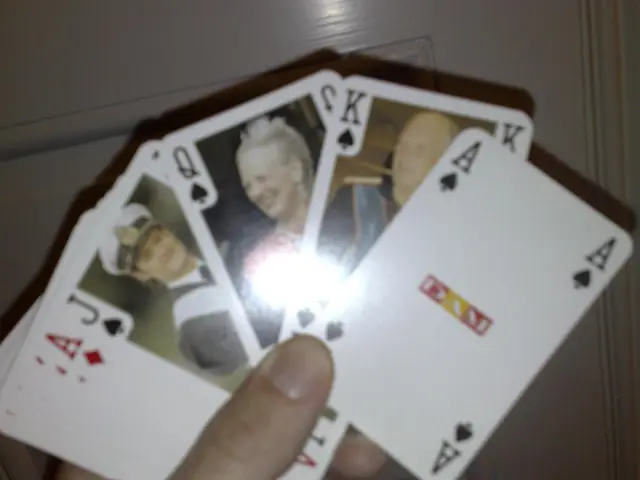Strategies for Winning at Video Poker Games
In the early 1970s, video poker was introduced as an innovative blend of gambling and technology, initially referred to as "poker slots." The first video poker machine, PokerMatic, was created by Dale Electronics, but it was not widely accepted due to its primitive nature [1]. The game gained more popularity and player credibility with the 1979 introduction of SIRCOMA's DrawPoker machine, offering a superior gaming experience [1].
Video poker distinguished itself from traditional slot machines by incorporating a strategic component, balancing luck and skill, which attracted players seeking more engagement than pure chance games [2]. Unlike slot machines, video poker machines require no interaction with a dealer or other players and allow players to influence outcomes through decisions [2].
The pay table for a 9-6 machine has payoffs for one coin played as follows: Pair of jacks or better, 1; two pair, 2; three of a kind, 3; straight, 4; flush, 6; full house, 9; four of a kind, 25; straight flush, 50; and royal flush, 250 [1]. However, some casinos offer the 8-5 pay table, with payoffs of 8-for-1 on the full house and 5-for-1 on the flush [1].
In competitive markets, casinos walk a tightrope between offering pay tables that are good enough for skilled players and not driving away weaker players [1]. In contrast, casinos in less-competitive markets may offer lower-paying video poker machines because they will still be played [1].
The possible combinations in video poker are known, allowing for the calculation of their frequency and the devising of an optimal playing strategy [1]. In its full-pay version, the basic game of Jacks or Better returns 99.5% with optimal play over the long haul [1]. The best Jacks or Better machines ever offered were 10-6 and 9-7 machines at a casino in Las Vegas, with payout percentages of more than 100% for optimal play [1].
In the United States, IGT and Bally's are the leading manufacturers of video poker machines, and their machines take up most of the floor space devoted to electronic gaming devices across the country [1]. In Nevada, casinos with a clientele of locals devote more than 50% of slot space to video poker [1].
Despite the possibility of being beaten, casinos continue to offer video poker games, as only a small percentage of players know the basics of proper play [1]. Enough Americans have an easy familiarity with the rank of poker hands that video poker has become one of the most popular casino games [1]. With optimal play, an 8-5 machine yields 97.9%, and the 7-5 machine pays 96.2% [1]. The version of Jacks or Better referred to as full-pay, returning 99.5% with optimal play, is commonly known as a 9-6 machine [1].
References: [1] Wikipedia, Video Poker. https://en.wikipedia.org/wiki/Video_poker [2] Gambling.com, A Brief History of Video Poker. https://www.gambling.com/resources/history-of-video-poker/
Casino-and-gambling trends in the 1970s were significantly influenced by the introduction of video poker, a blend of technology and traditional casino games. The evolution of video poker personalities emerged as player credibility grew with improved gaming experiences like SIRCOMA's DrawPoker machine. This new form of entertainment distinguished itself from traditional slot machines by offering a balance of skill and luck, which made it popular among gamblers seeking more engagement.




